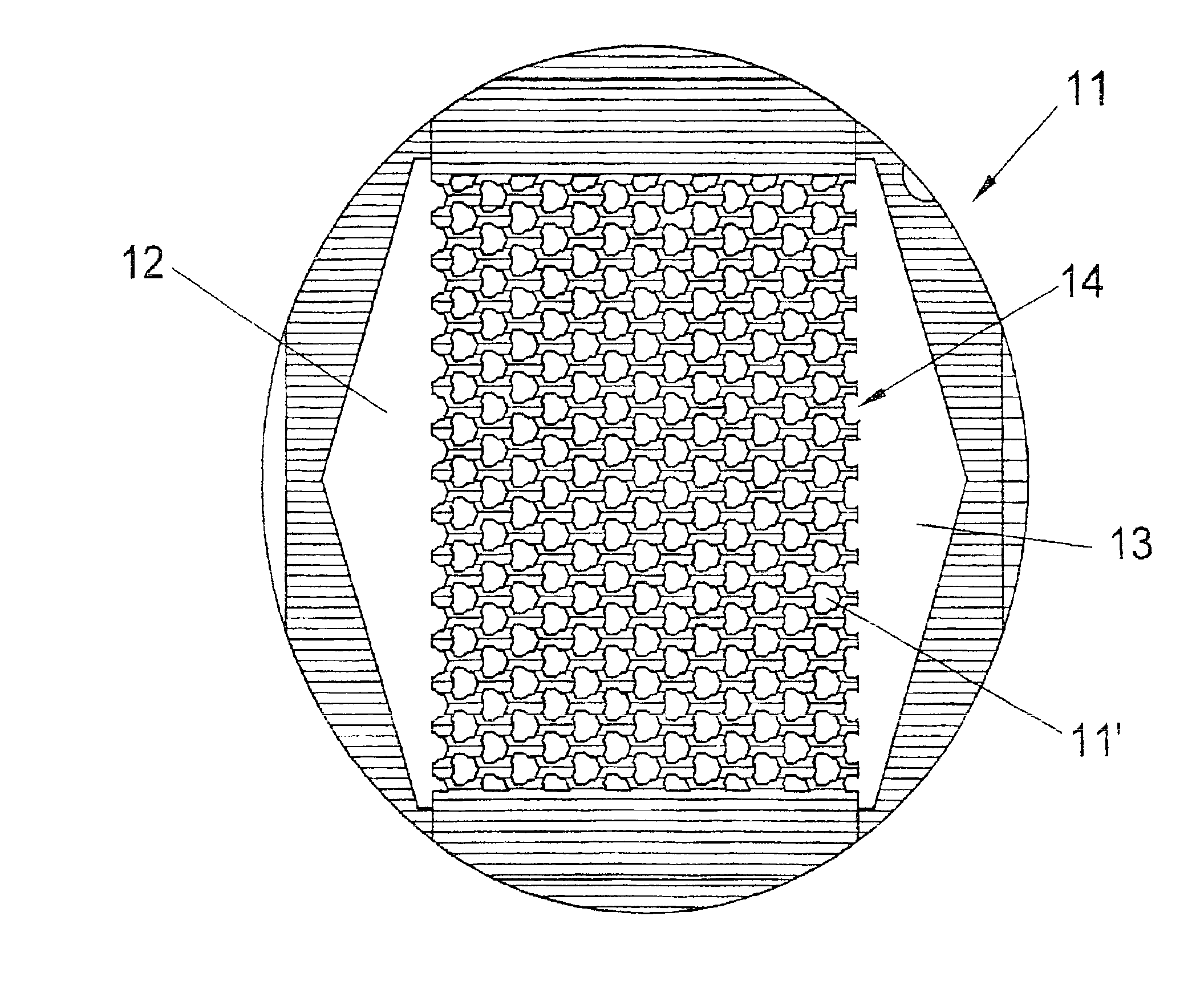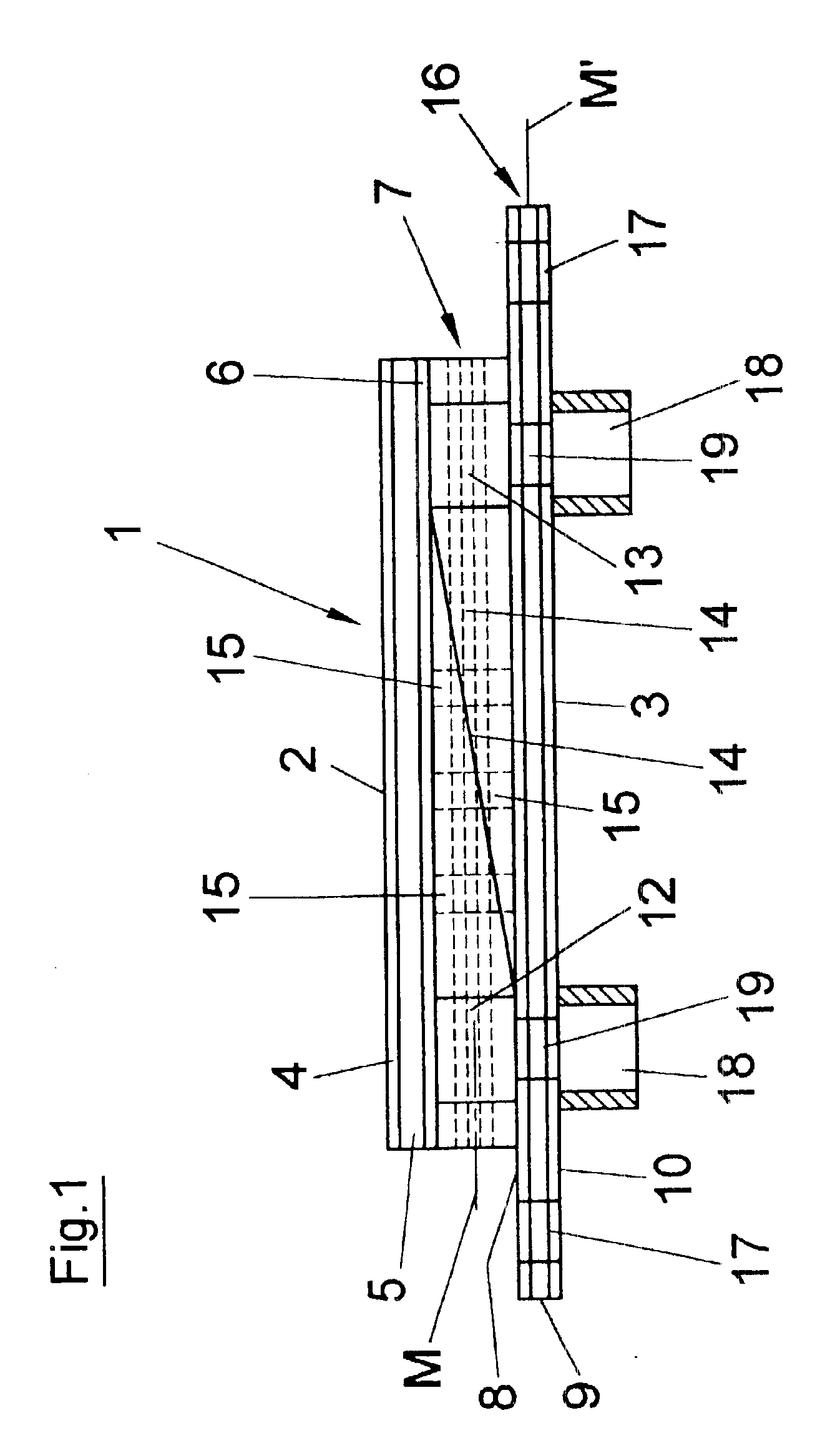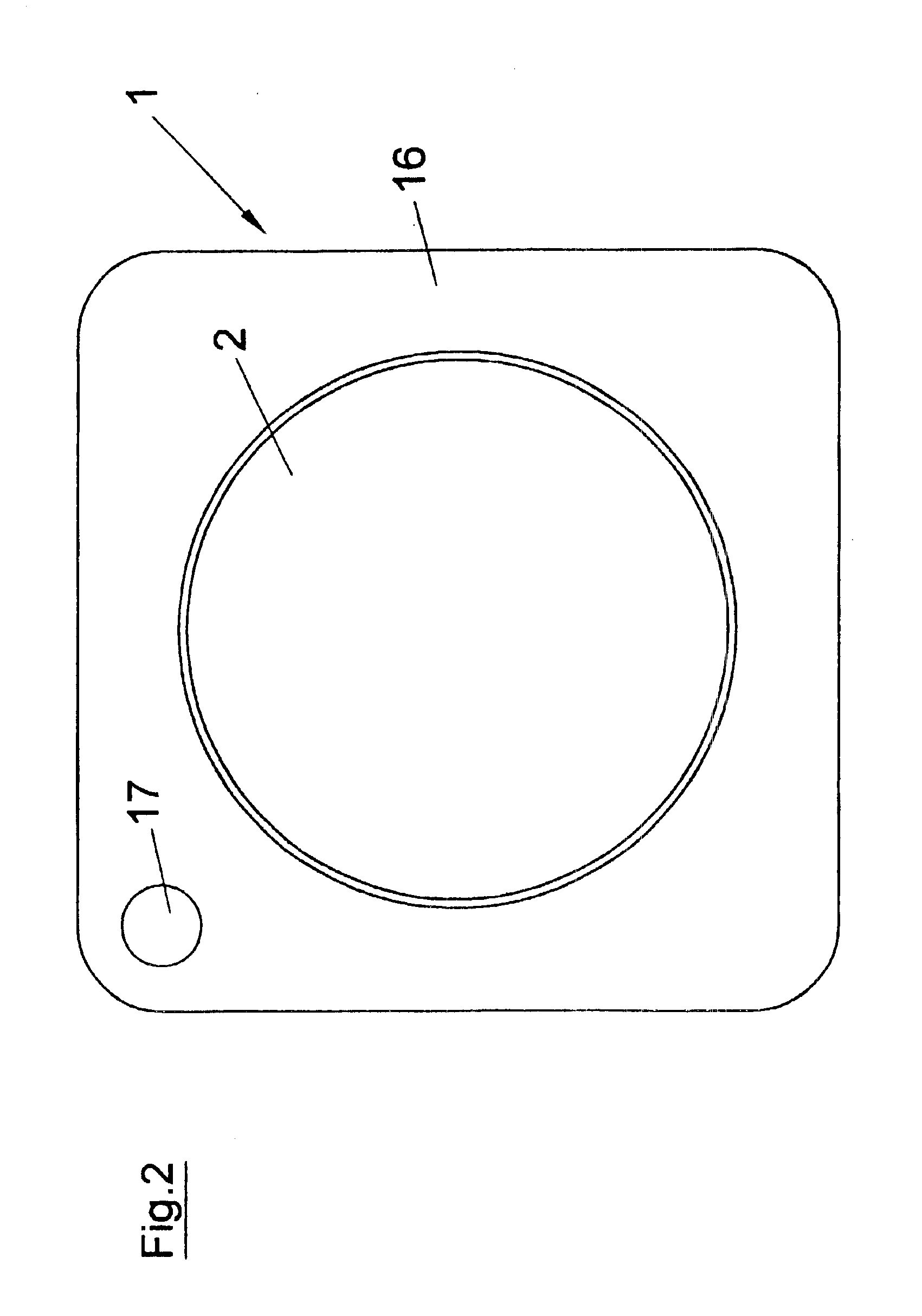Mirror for laser applications and method for manufacture of said mirror
a laser application and mirror technology, applied in the direction of lasers, instruments, laser construction details, etc., can solve the problems of serious decline in the mechanical stiffness and stability of the mirror, adversely affecting the quality of the laser beam focal point and therefore the quality of the processing of the part with the laser, and reducing the heat expansion coefficient. , the effect of improving the thermal stability of the first layer
- Summary
- Abstract
- Description
- Claims
- Application Information
AI Technical Summary
Benefits of technology
Problems solved by technology
Method used
Image
Examples
Embodiment Construction
The mirror generally designated 1 in the figures is intended for use in high-energy lasers, for reflecting the laser beam. The mirror 1 is constructed of several layers that are connected with each other on the surface in a suitable manner. In particular, the mirror 1 has the design described below, where the various areas and layers are connected with each other beginning from the top 2 of the mirror toward the bottom 3 of the mirror in the following order:
top copper layer 4 that forms the mirror surface on its open top side 2;
intermediate layer 5;
top copper or end layer 6 for the cooler structure 7 located beneath;
bottom copper or end layer 8 for the cooler structure 7;intermediate layer 9;bottom copper layer 10 that forms the bottom 3 of the mirror 1.
The intermediate layers 5 and 9 are made of a material that has a much lower heat expansion coefficient than the copper of the copper layers, namely equal to or less than 10×10−6[1 / K]. The intermediate layers 5 and 9 are preferably m...
PUM
 Login to View More
Login to View More Abstract
Description
Claims
Application Information
 Login to View More
Login to View More - R&D
- Intellectual Property
- Life Sciences
- Materials
- Tech Scout
- Unparalleled Data Quality
- Higher Quality Content
- 60% Fewer Hallucinations
Browse by: Latest US Patents, China's latest patents, Technical Efficacy Thesaurus, Application Domain, Technology Topic, Popular Technical Reports.
© 2025 PatSnap. All rights reserved.Legal|Privacy policy|Modern Slavery Act Transparency Statement|Sitemap|About US| Contact US: help@patsnap.com



